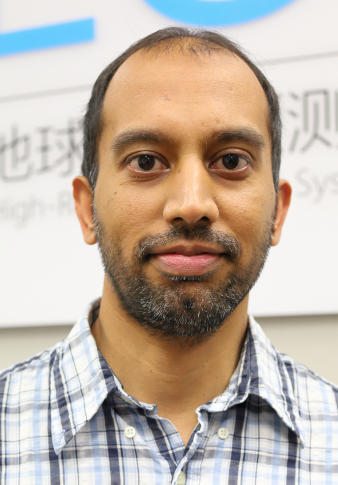Project 3: High-resolution ocean model improvement and development
Project Leaders

Qiao (QNLM)

Ramachandran (TAMU)
Project Objective
Many small-scale ocean processes that can sea-surface temperature (SST) variability and coupling processes between SST and overlying atmosphere are not well represented in current generation ocean models. In particular, many ocean models do not include ocean surface wave dynamics in upper ocean mixing parameterization that has a direct impact on ocean surface mixed layer simulation and SST (Qiao et al. 2004, 2010).
The objective of this research project is to test a working hypothesis that improving parameterizations of ocean vertical mixing in CESM by including surface wave processes can lead to significant improvement of ocean mixed layer simulations that are critical for accurate simulations of sea-surface temperature and its impact on climate.
Research Plan
To test this hypothesis, we will first implement the QNLM wave-induced mixing parameterization to the existing ocean component of CESM in the framework of the Community Ocean Vertical Mixing (CVMIX) software, and conduct forced ocean-ice sensitivity experiments using the common atmospheric forcing for Coordinated Ocean-ice Reference Experiments (CORE). Once these experiments are analyzed and evaluated, we will conduct sensitivity experiments with the high-resolution CESM with and without the wave-induced mixing parameterization.
In parallel with the above efforts, we will evaluate a new ocean model that has been developed by QNLM. This new ocean model has improved upper ocean mixing processes, including surface wave and tidal effects, as well as other unresolved small-scale dynamics. We will first conduct forced ocean-ice simulation with this new model using the CORE forcing and compare the results to those derived from the existing CESM ocean model. If the new ocean model shows marked improvements in simulating ocean circulations, particularly sea-surface temperature, surface mixed layer and upper ocean heat content, we will then replace the existing ocean component with the new QNLM ocean model in CESM.
Project Time Table
Year 1
- Complete the implementation of wave-induced mixing parameterization to CESM ocean component.
- Begin the sensitivity experiments with and without wave-induced mixing parameterization.
Year 2-3
- Complete the sensitivity experiments and analyses.
- Implement the wave-induced mixing parameterization to CESM.
- Conduct the new QNLM ocean-ice model simulations.
Year 4-5
- Conduct CESM experiments with and without the wave-induced mixing parameterization.
- Publish the results of the CESM experiments with and without the wave-induced mixing parameterization.
- Replace the existing CESM ocean component with the new QNLM ocean model.
Progress and Current Status
A diagnostic study on the role of air-sea interaction in eddy energy dissipation in the Kuroshio Extension (KE) region has been completed. Based on an eddy energetics analysis of the HR CESM simulations, it is found that the baroclinic pathway associated with temperature variability is the main eddy energy source in this region. Both the air-sea heat flux and wind stress act as eddy killers that remove energy from ocean eddies. Heat exchange between atmosphere and ocean eddies dominates the dissipation of eddy temperature variance within the surface layer and accounts for 36% of the total dissipation in the upper 350 m layer. Compared to the heat exchange, the role of wind power in damping the eddy kinetic energy (EKE) is relatively small. Only 18% of EKE dissipation in the upper 350 m is attributed to eddy wind power. Misrepresentation of the damping role of mesoscale ocean-atmosphere interaction can result in an incorrect vertical structure of eddy energy dissipation, leading to an erroneous representation of vertical mixing in the interior ocean. These results are summarized in a journal paper submitted to Journal of Climate (Yang et al. 2019).
Research & Projects
ResearchModeling ToolsProject 1: High-resolution CESM present and future climate simulationsProject 2: High-resolution ensemble CESM decadal climate predictionProject 3: High-resolution ocean model improvement and development Project 4: Development of R-CESM and online nesting capability for CESMProject 5: Development of online coupled data assimilation capability for R-CESM and CESM
